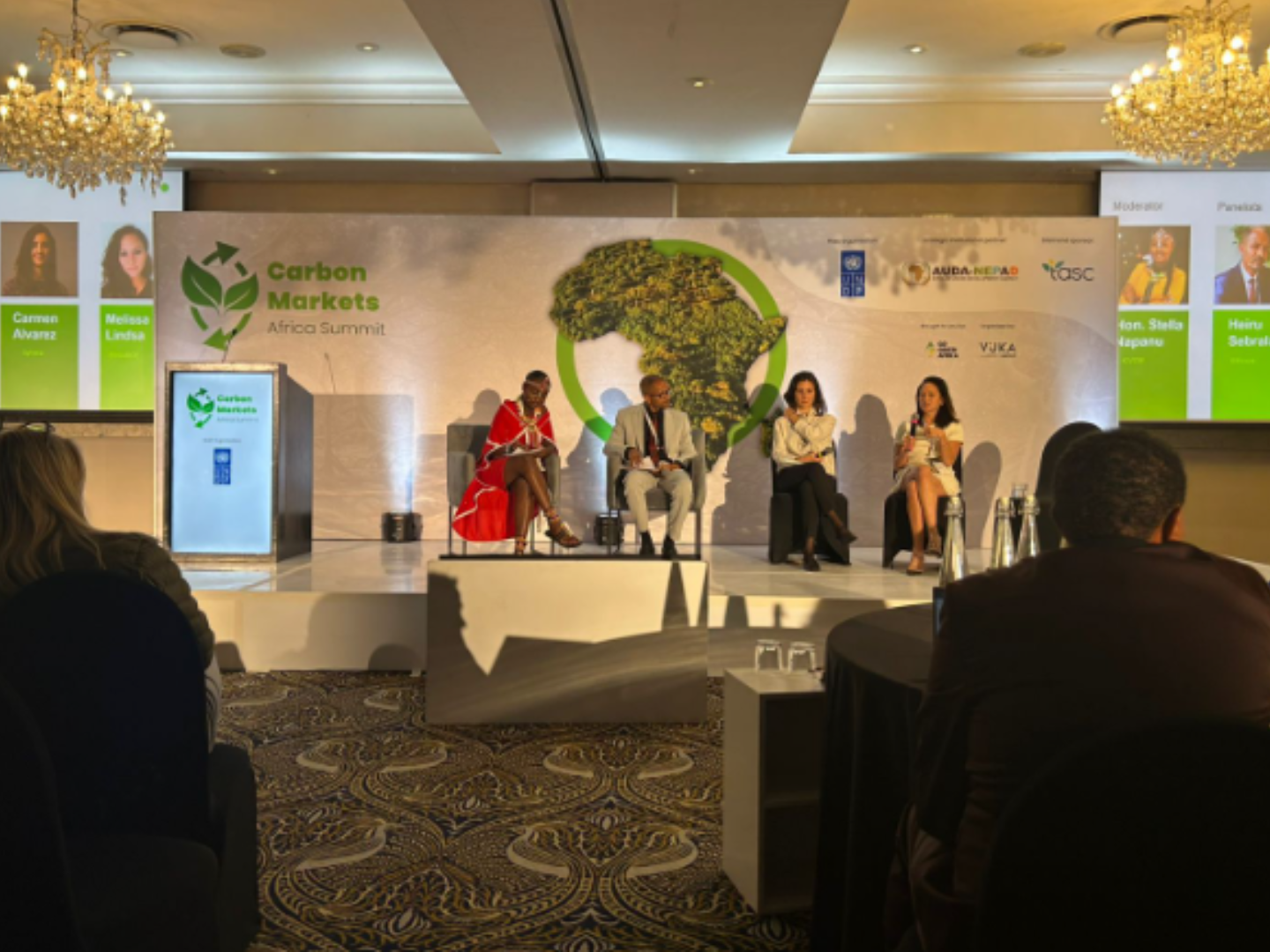The fact that climate change directly affects the carbon market makes it necessary to continue having conversations aimed at developing strategies to mitigate the onset of significant global warming by reducing greenhouse gas concentrations.
Join our WhatsApp channel for more updates on the mining industry
This was the central message of an opening presentation by Bernardin Uzayisaba, carbon market programme specialist at the United Nations Development Programme, at the Carbon Markets Africa Summit held on 21-23 October in Sandton.
As the global economy shifts towards sustainability and climate-conscious business practices, mining as a sector also faces increasing pressure to reduce its carbon footprint.
One of the most effective strategies to achieve this is through carbon credits, which provide mining companies with a market-driven mechanism to offset emissions, improve their environmental, social and governance (ESG) profiles, and remain competitive in an evolving regulatory landscape.
Carbon credits represent a quantifiable reduction of greenhouse gas (GHG) emissions. One carbon credit equates to one metric ton of carbon dioxide or an equivalent GHG removed from the atmosphere.
These credits can be bought and sold on carbon markets, allowing companies to compensate for their emissions by funding projects that reduce carbon output.

Carbon credits typically come from initiatives such as reforestation projects, renewable energy projects, methane capture as well as carbon capture and storage.
Uzayisaba said the importance of the conversations around strategies aimed at reducing the onset of significant global warming has been progressively increasing since the United Nations Conference on Environment and Development, also known as the Earth Summit, that was held in Rio de Janeiro, Brazil, in 1992.
ALSO READ: Critical minerals at the centre of energy transition
“This was the first international treaty to address climate change, when the United Nations Framework Convention on Climate Change was launched, resulting with the United Nations framework put in place to make negotiations possible. This established a foundation and market mechanism for future climate negotiations.”
Next was the adoption of the Kyoto Protocol, an international treaty in 1997 in Kyoto, Japan, which extended the 1992 Earth Summit framework, and committed state parties to reducing greenhouse gas emissions, based on the scientific consensus that global warming is occurring, with human-made carbon dioxide emissions driving it.
“The Kyoto Protocol was more complete and much more complicated, and was important because it created a foundation, which led to a flexible mechanism.”
Avoiding non-compliance penalties and future-proofing operations
Mining companies operating in jurisdictions with strict carbon regulations have an obligation to comply with emission caps. Carbon credits offer a flexible mechanism to meet these requirements without compromising production.
By proactively investing in carbon credits, mining companies can mitigate the risk of non-compliance penalties and future-proof their operations against evolving climate policies.
The mining industry is traditionally carbon-intensive due to energy-intensive extraction, processing, and transportation activities.
ALSO READ: The future of energy and mining in SA is low carbon, digital and local
However, leveraging carbon credits can help mining companies transition towards more sustainable operations while gaining multiple benefits.
Carbon markets allow the mining industry to purchase or sell carbon credits to offset their emissions, helping them meet net-zero targets.
Africa is not a significant emitter
Uzayisaba said Africa has always been regarded as a region with significantly less emissions, but ironically also regarded as the most vulnerable region to global warming.

This is not helped by the fact that negotiations in carbon markets are driven by corporates, mostly with the exclusion of the project owners in the developing countries.
“The purchasing rules are driven by corporates. And even though the companies are driven by net-zero requirements, they’re not going to change the operating system overnight.
“It’s a network of like-minded organisations. The process is also complex, which makes it difficult to get into a single mindset about climate and emissions.”
Adopted in France in 2015, the Paris Agreement aimed to limit global warming to below 2 degrees Celsius, preferably to 1.5 degrees, compared to pre-industrial levels. Uzayisaba says it was much more ambitious because of the limits it set.
“The 1.5 degrees scenario was ambitious. As usual, it was meant to be a transparent framework. It was also a balance between different things, including emissions reduction, mitigation, adaptation, and about finance, business, economics and the social economy.
“It was important because one of the major things it did was introducing the issue of technology, which had started impacting a lot of countries.
“Another one of its key achievements was the introduction of the balance between mitigation and adaptation, which was a direction towards a new approach.”
ALSO READ: Why South Africa must guard its cobalt future with smart export rules
He ended his address by highlighting how Arica has recently communicated a key message through the Addis Ababa Declaration, adopted in September this year at the Second African Climate Summit in Ethiopia, outlining the continent’s unified stance on climate action, emphasising adaptation, African-led solutions and urgent global financial reform.

“The message from Addis Ababa was clear. This is a comprehensive framework addressing the intersection of climate action with peace, security and justice.
“When you look at the African leaders who are coming out with a new message, everybody is singing from the same hymn book. The goal is to position ourselves as a continent of potential, especially as we are responsible for the least amount of emissions.”
He said Africa’s pathway to decarbonisation must be characterised by fairness and equity, and that the region has to tell the story of how it is a continent of opportunities and potential.
It should lead by example and commit to strengthening interdisciplinary collective measures to improve the trust among all countries within these climate agreements.
“As a continent of opportunities, this is a call for investment and to seek for integrating peace, security and climate change frameworks into action.”

